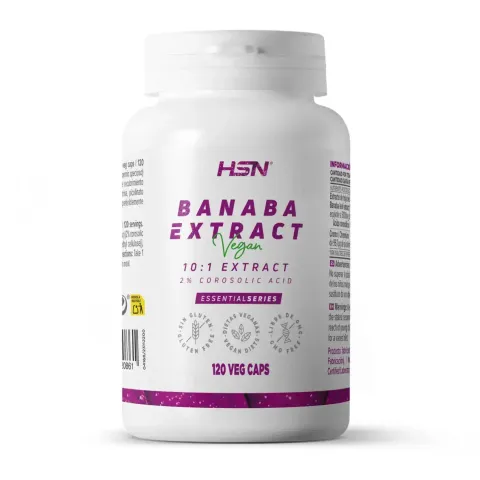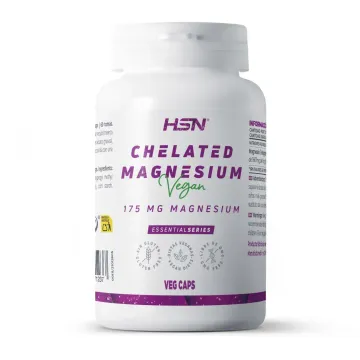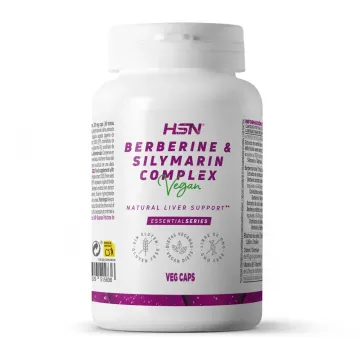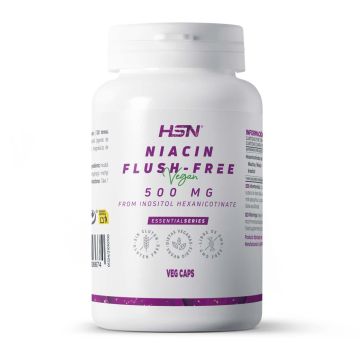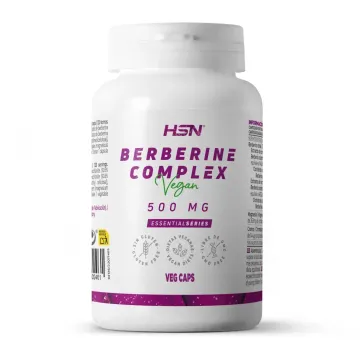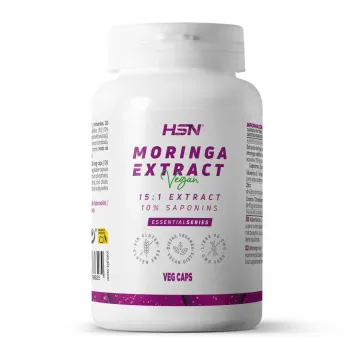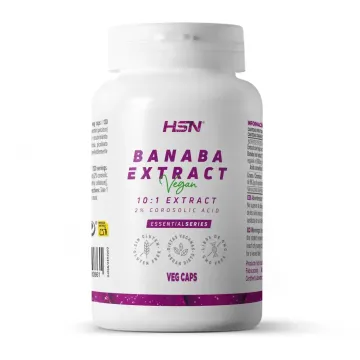- Banaba Extract - Authentic Lagerstroemia speciosa (certified species).
- Extraction 100% from the leaf - We exclusively use the most prized part of the plant.
- Standardized to 2% Corosolic Acid - The main compound with physiological properties of the plant.
- HSN Formula with chromium picolinate in its composition which contributes to the maintenance of normal blood glucose levels.
- In vegetable capsules without aesthetic additives - Vegan, transparent encapsulation (not opaque or colored).
Banaba Extract - A Natural Support for Blood Sugar Control *
Banaba Extract (10:1) 500mg from Essentialseries is a dietary supplement in vegetable capsules developed with a 10 times more concentrated extract from the banaba leaf Lagerstroemia speciosa, standardized to 2% corosolic acid, a natural and highly valued compound of the banaba.
Banaba, also known as Lagerstroemia, is an ornamental plant from the Asian continent, as its flowers are very showy with a beautiful pink color and have been used to decorate houses and outdoors for centuries. However, banaba has an additional use that is even more interesting, and that is that its extracts, traditionally prepared centuries ago by infusing the leaves in water, possess positive nutritional and physiological properties. This is why dietary supplements with this plant have been developed.
Banaba extract is suitable for vegan diets and has no allergens in its composition, nor cross-contamination. It is a suitable supplement for all types of people.
HSN presents you with quality Banaba extract
Banaba - A plant commonly used in Asia
Banaba (Lagerstroemia speciosa) is a plant that has traditionally been used in many countries from different regions of the Asian continent for its unique nutritional properties.
It is considered a plant of traditional use, in which its leaves were infused to naturally extract the maximum possible content of its main active compound: corosolic acid.
Current plant extracts that meet key quality factors are the evolution of infusions from classic Asian culture that were prepared extracts with water ready to drink, now they are more concentrated and controlled, in powder, encapsulated as is the case with our product, to be able to take advantage of the properties of the plant efficiently and conveniently.
But not all extracts are the same... At HSN, we assure you complete control of all factors that condition its quality.
Leaf Extract, why is it relevant?
Asian cultures that used banaba only infused the leaves, they did not use its roots, stems, flowers, and other parts, why?
Because banaba leaves are the aerial parts of the plant that actually contain a rich composition of characteristic natural elements of this species, among which are:
- Valoneic acid dilactone.
- Species-specific Elagitannins of the Lagerstroemia species.
- Ethyl gallate.
- Anthocyanins.
- Flavonoids
And among them stands out the triterpenoid: corosolic acid, as it is the one that research teams have isolated most frequently attributing to it the fundamental effects of the plant.
High concentration - x10 times more extracted
Plant extracts are prepared from variable amounts of raw material, in this case from banaba leaves, resulting in a specific supply of powdered extract, depending on the extraction ratio it presents.
Extracts with very high extraction ratios, tens or hundreds of times more concentrated than the original raw material, have the counterpart that if the resistance of the plant's active compounds to the specific solvent that concentrates it so much is not well studied, an extract with the natural content of the plant degraded may occur.
At HSN, this does not happen, since we do not condition the effectiveness of the plant by presenting a 'more concentrated' extract, the concentration of the extract is that properly obtained from the process of concentrating banaba leaves, using solvents that are not aggressive with the original raw material to maintain its natural content.
Hence the high content of corosolic acid in the extract, along with an indeterminate but existing content of other bioactives naturally present in banaba.
Standardized Content to 2% Corosolic Acid
Corosolic acid is a triterpenoid, a compound naturally present in plants, characteristically in banaba although it can also be found in others such as, for example, cranberries, although in much lower concentrations. Corosolic acid structurally resembles ursolic acid.
With a chemical formula of C30H48O4, corosolic acid has been purified from Lagerstroemia extraction for individual study as it seems to be the main responsible for the plant's biological effects. Hence the importance of its standardization in extracts, to guarantee a determined, specific, and known consumption.
The corosolic acid content of HSN's extract is 2% of its composition, a high and significant value.
An HSN Formula with Chromium Picolinate for Maximum Effectiveness
The most outstanding properties of banaba are associated with glucose metabolism*, and to take advantage of these effects, in addition to not diminishing the importance of the extract as the main element of the formula, we have added chromium picolinate.
Chromium picolinate is the most recognized and used form of chromium in scientific studies to administer dietary chromium, chromium is a trace element that contributes to maintaining normal blood glucose levels.
Effects of Banaba. Discover Lagerstroemia speciosa
Like chromium, banaba is used for its properties associated with glycemia, as it is a plant whose leaves have unique properties:
Lagerstroemia speciosa extract helps maintain normal blood glucose levels.
Known Combinations with Banaba - Try Them
We have Gluco Care as a complete and ideal formula to contribute to glucose maintenance, thanks to its composition. This formula is completely suitable in combination with banaba.
There are other plants that are normally used together with Banaba, to highlight:
Try Banaba along with other supplements from the 'Diabetics' category on our website.
Discover Natural Plant Extracts at HSN
At HSN, we have a wide catalog of herbal extracts, all of them have been individually studied for their optimal development, using the most suitable solvents for their composition, with optimal contributions of: concentration, extraction, and standardization.
Enjoy a unique supply of the best compounds that nature provides us, presented optimally in HSN formulas.
Bibliographical References
- López-Murillo, L. D., González-Ortiz, M., Martínez-Abundis, E., Cortez-Navarrete, M., & Pérez-Rubio, K. G. (2022). Effect of Banaba (Lagerstroemia speciosa) on Metabolic Syndrome, Insulin Sensitivity, and Insulin Secretion. Journal of Medicinal Food, 25(2), 177–182.
- Suzuki, Y., Unno, T., Ushitani, M., Hayashi, K., & Kakuda, T. (1999). Antiobesity activity of extracts from Lagerstroemia speciosa L. leaves on female KK-A(y) mice. Journal of Nutritional Science and Vitaminology, 45(6), 791–795.
- Miura, T., Takagi, S., & Ishida, T. (2012). Management of Diabetes and Its Complications with Banaba ( Lagerstroemia speciosa L.) and Corosolic Acid . Evidence-Based Complementary and Alternative Medicine, 2012, 1–8.
- Stohs, S. J., Miller, H., & Kaats, G. R. (2012). A review of the efficacy and safety of banaba (Lagerstroemia speciosa L.) and corosolic acid. Phytotherapy Research, 26(3), 317–324.
* Lagerstroemia speciosa contributes to normal glucose metabolism.
 Before
Before After
After During
During Morning
Morning Afternoon
Afternoon Night
Night







